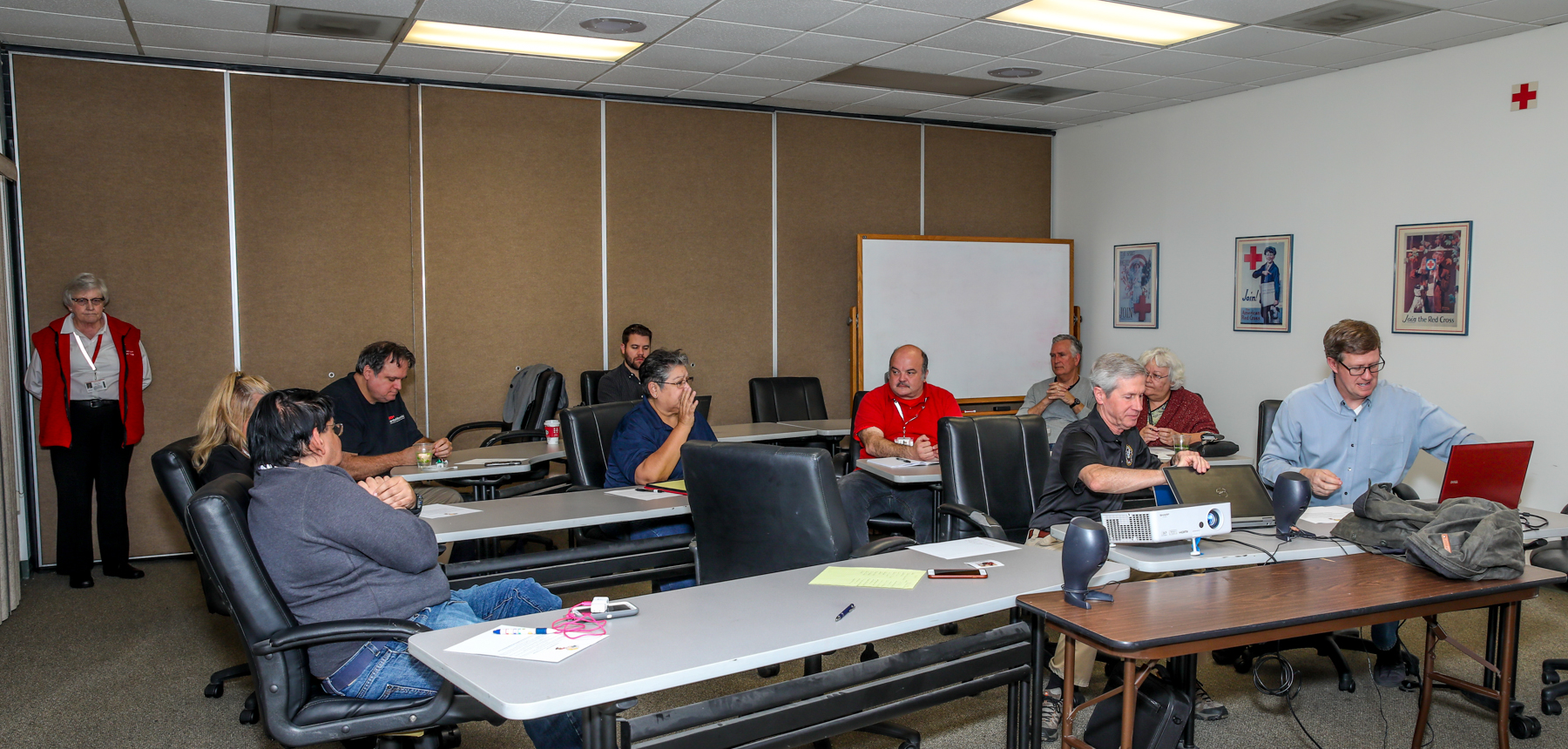Written by Helen Brooks and Mary Schander
Photo by Roxanne Schorbach
On January 17, 2018, the Public Affairs/Public Information Team of Territory 2 held their quarterly Communications meeting at the Arcadia facility. The topic was Public Emergency Alerts – background and current status. The presenter was John Penido, the Disaster Management Area Coordinator (DMAC) of Los Angeles County Disaster Management Area C. In attendance were Public Information volunteers from T1, T2, T3, T4, as well as Los Angeles Region staff.
Mr. Penido gave a brief history of the evolution of the Public Alert Systems, but focused mainly on our current public dissemination system, the Integrated Public Alert Warning System (IPAWS), which is coordinated with the Federal Communications Commission (FCC) and the Federal Emergency Management Agency (FEMA). An emergency notification must include the type of emergency, geographic location the message is targeting, and clear information for the public, including appropriate instructions for the public to follow. The importance of clear and correct messaging was emphasized recently by the Santa Barbara County mudslides and Hawaii human error missile warning. As a result, government entities are continuing to review protocols associated with IPAWS as well as other emergency public information alerting systems. At the regional or local level, people can register for NIXLE as well as the specific city and county emergency notification systems where you and your family live and work.
Challenges for emergency notification systems include demographic and language differences, as well as coordinating with multiple cell phone companies at a time when power may be disrupted. Another concern is that too many messages or false alarms may result in some people disabling the local and wide area notifications on their devices. Among the upcoming enhancements to the IPAWS system are messaging in Spanish, extending the character count from 80 to 360, and using large public-address systems.
An interesting reminder was how the behavior of others affects our own behavior. Mr. Penido noted that when a key person in a neighborhood or a group of neighbors acts in a certain way, others will emulate that behavior. For example, if people are being asked to evacuate an area, if a key person or a group of people follow the evacuation order, chances are the rest will do the same. However, if that person or group does not evacuate, then the chances are others will also not evacuate, potentially putting the entire area at risk. This is certainly crucial for Red Cross volunteers to remember as leaders in their neighborhoods and community.
Those who are interested in further information about IPAWS and emergency notification protocols were encouraged to visit the FEMA website for online courses: https://www.fema.gov/integrated-public-alert-warning-system .
The March 2018 meeting of the Territory 2 Public Affairs/Public Information Team will be announced mid-February. The meetings are held quarterly on Wednesday nights from 6:30 p.m. to 8:30 p.m. All Red Cross volunteers and staff are cordially invited to attend.





